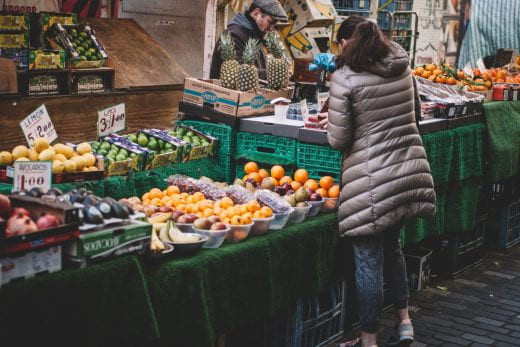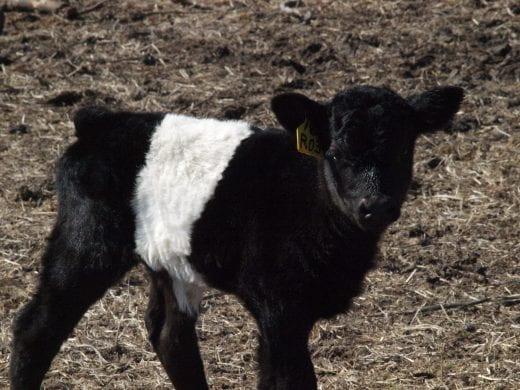In today’s Better Kansas, we touch on the climbing obesity rate in Kansas, drug take back day, making a difference, fall foliage, a resource for feedlots and a competition that has nothing to do with sports. This is a small glimpse of what K-State Research and Extension across the state has to offer. Share on social media and subscribe! – Mary Lou Peter mlpeter@ksu.edu
Better Living, Better Communities
OH, NO! RECENT CDC DATA PUT KANSAS NEAR THE TOP OF THE OBESITY LIST. Not a place we want to be. And the trend is going in the wrong direction. An annual CDC report lists Kansas among 12 states that have topped 35% in the prevalence of obesity in its population. We were just below 35% a year ago. Read the article, Kansas obesity rates top 35% for more information and listen to a Sound Living audio interview with an extension nutrition specialist on the problem and ways to tackle it. The pandemic hasn’t helped. I’ve got to think that when store shelves emptied last spring and we were evaluating what we had in our pantries and freezers, it encouraged some of us to focus on food like we may not have before. Not to mention that again, those of us working from home are 10 paces from our refrigerators. And though many gyms have reopened, there’s an understandable reluctance to go right now.
IT’S SHORT NOTICE, BUT SATURDAY, OCT. 24 IS DRUG TAKE BACK DAY. Remember those potent pain pills from surgery five years ago? Or the anti-inflammatory from that bad muscle sprain? Check your medicine cabinet, bathroom drawers and maybe even kitchen cabinets for expired prescription medications that you didn’t finish and safely dispose of them at one of many “takeback” locations across the state. Check the Pollution Prevention Institute’s Prescription Drug Take Back Day page for information on why and where you can safely dispose of those medications, no questions asked. Last year I rounded up several bottles that had migrated to the back of a drawer. One of them was prescribed 10 years ago! Last year, Americans turned in 883,000 pounds of prescription drugs at nearly 6,300 sites operated by the Drug Enforcement Administration and almost 5,000 of its state and local law enforcement partners.
 SATURDAY IS ALSO “MAKE A DIFFERENCE DAY.” I almost didn’t include this because, again, short notice but decided that really, every day can be “Make a Difference Day.” Doing good things for others and our communities doesn’t have a time limit. Take a look at this Make a Difference article for ideas to consider. I’ll bet you can come up with a lot more. And don’t feel constrained by a date. Any day we help or support others is a good day.
SATURDAY IS ALSO “MAKE A DIFFERENCE DAY.” I almost didn’t include this because, again, short notice but decided that really, every day can be “Make a Difference Day.” Doing good things for others and our communities doesn’t have a time limit. Take a look at this Make a Difference article for ideas to consider. I’ll bet you can come up with a lot more. And don’t feel constrained by a date. Any day we help or support others is a good day.
Better Farming, Ranching and Gardening
 ONE OF THE SIMPLE JOYS THIS TIME OF YEAR IS TO GO FOR A WALK OR DRIVE AND TAKE IN THE BEAUTIFUL FALL FOLIAGE. It’s like free therapy. But why does fall color in our trees vary from year to year? And why even in our prettiest years, do our colors seem less vibrant than those in New England? A short item in the recent Horticulture Newsletter covers those whys and more. Hint: Weather is just one of several factors. Take a walk. Take it in. I hope it’s as therapeutic for you as it is for me. Truthfully, I’ve never been to New England in the fall peak leaf season. I’m only going from the pictures I’ve seen in magazines and brochures. Surely they haven’t photoshopped those colors?! Also included in the newsletter is planting spring flowering bulbs (hurry), fall garden cleanup, preserving garden tools, and winter care of house plants.
ONE OF THE SIMPLE JOYS THIS TIME OF YEAR IS TO GO FOR A WALK OR DRIVE AND TAKE IN THE BEAUTIFUL FALL FOLIAGE. It’s like free therapy. But why does fall color in our trees vary from year to year? And why even in our prettiest years, do our colors seem less vibrant than those in New England? A short item in the recent Horticulture Newsletter covers those whys and more. Hint: Weather is just one of several factors. Take a walk. Take it in. I hope it’s as therapeutic for you as it is for me. Truthfully, I’ve never been to New England in the fall peak leaf season. I’m only going from the pictures I’ve seen in magazines and brochures. Surely they haven’t photoshopped those colors?! Also included in the newsletter is planting spring flowering bulbs (hurry), fall garden cleanup, preserving garden tools, and winter care of house plants.
CATTLE PRODUCTION AND CATTLE FEEDING ARE BIG BUSINESS IN KANSAS. In fact, recent data from the Kansas Department of Agriculture show the output from beef cattle ranching and farming, including feedlots and dual-purpose ranching was worth $8.7 billion and employed nearly 39,000 people. Cattle feeders and others can keep tabs on such values as the average number of days on feed, average daily gain, harvest weight, dry matter feed conversion, average cost of gain, plus corn and alfalfa hay prices with the Focus on Feedlots newsletter.
WE KANSANS CAN BE A BIT COMPETITIVE. Just ask a Wildcat or a Jayhawk … or a Shocker, Gorilla, Hornet, Tiger or Ichabod. But we’re not just talking sports. Farmers can be competitive, too. The annual Kansas Corn Yield Management Contest recognizes farmers who have high corn yields, and improve crop management practices and efficiency for greater sustainability and profitability, plus share helpful data with other farmers. So like sports, this contest encourages participants to constantly improve. But in this case, those of us who rely on corn for feed, food, fuel and manufactured products benefit.
_
For more resources and activities, contact the K-State Research and Extension office in your area. Check out our other blogs and subscribe to our weekly emails here: https://www.ksre.k-state.edu/news/blogs/










